Under the umbrella of the European Green Deal, in February 2021 the European Commission presented a new EU adaptation strategy: ‘Forging a climate-resilient Europe’. It suggests action for smarter, faster and more systemic adaptation and pays renewed attention to the international dimension. As part of the smarter adaptation objective, the strategy asks for more and better climate-related risk and loss data, as these will be crucial to improving the accuracy of climate risk assessments. In response to that objective, the EEA has updated information on economic losses and fatalities using two sources of data. In this briefing, results from the CATDAT (RiskLayer GmbH) and NatCatSERVICE (Munich Re GmbH) databases are presented (Box 1). Losses are categorised into three groups of weather- and climate-related extreme events: meteorological events (e.g. storms), hydrological events (e.g. floods) and climatological events (e.g. heatwaves, cold waves, droughts). The 32 EEA member countries are covered.
Box 1. Data sources for EEA work on economic losses and fatalities from weather- and climate-related events
Each year since 2012, the EEA has received data from 1980 covering all 32 EEA member countries from the NatCatSERVICE database from Munich Re GmbH under institutional agreement and to which contractual terms about disclosure apply. For many years, this was one of the only databases focusing on all natural hazards and on the associated total and insured losses. The EEA carries out the analysis on the (semi-)raw information extracted from the NatCatSERVICE database. More data sources are available now than a decade ago, so the EEA since 2021 also procures the CATDAT database from RiskLayer GmbH.
Although similar in scope, the data from these databases are not identical. Each of the data sets is constructed based on a series of explicit and implicit choices and assumptions. A ‘correct’ data set does not exist. The only expectation is that each of the data sets is as internally coherent as possible. Therefore, the data from both sources are presented separately in this briefing, without gap filling or combining the data.
The data agreement with Munich Re limits the use of the data by the EEA. Despite these restrictions, the EEA wants to continue to work with Munich Re. At the same time, the different policies that use this kind of information require increasingly detailed analyses of the data and the disclosure of details beyond what is possible in the agreement between Munich Re and the EEA. In future, the CATDAT data will allow the EEA to publish assessments of individual hazards (and subtypes of hazards, e.g. coastal flooding or hailstorms), for different regions of Europe and for shorter periods of interest.
Past trends
For the EEA member countries, total economic losses from weather- and climate-related events of between EUR 450 and EUR 520 billion (in 2020 euros), depending on the source, were recorded for the 41-year period 1980-2020 (Figure 1). Meteorological events and hydrological events each caused between 34% and 44% of total losses and climatological events caused between 22% and 24%. Geotechnical hazards (e.g. earthquakes and volcanoes) are not included in the figures, as, although they are natural hazards, they are not weather- or climate-related extremes. The total losses resulting from these geotechnical hazards are comparable to those from climatological events.
Between only one quarter and one third — depending on the source — of economic losses were insured. Moreover, there are large differences in insured losses between the three groups of events: 37-54% of total losses for meteorological events, 15-24% for hydrological events and 7-16% for climatological events (Figures 2a and 2b).
More info...
More info...
In addition to differences in insured losses between the different types of event, there are also large differences between EEA member countries. Based on CATDAT data (Figure 3), the countries with the highest levels of insured economic losses as a percentage of total losses are Denmark, the Netherlands and Norway (48-56%), while Croatia, Lithuania and Romania have the lowest values (0.5-1.5%). Based on NatCatSERVICE data, Belgium, Luxembourg and Denmark have the highest percentages of insured economic losses, while Lithuania, Romania and Cyprus have the lowest.
More info...
Most fatalities (more than 85%) in the period 1981-2020 were a consequence of heatwaves. The heatwave of 2003 caused the most fatalities, accounting for between 50% and 75% of all fatalities from weather- and climate-related events in the last four decades. As heatwave fatalities are measured indirectly through excess mortality estimates that are also influenced by other non-climatic factors, the estimates per country differ significantly depending on the data source.
According to the World Meteorological Organization, the number of weather-related disasters has increased globally over the past 50 years, causing more damage but fewer deaths. The trends in losses and fatalities at the global level are clearer than trends in data for Europe only. For all four decades in the period 1980-2020, all major events are likely to be included in all data sets. However, it is estimated that for Europe 3% of climate- and weather-related extreme events were responsible for around 60% of losses over the period 1980-2020, with large interannual variability and differences between data sets. Moreover, reporting bias (expressed by the number of events) further complicates the interpretation of trends over time. The CATDAT data show steadily increasing average annual (inflation-corrected) total losses over the decades, from EUR 10.0 billion (1981-1990) to EUR 14.7 billion (2011-2020). The number of events per decade also follows an increasing trend, with 392, 483, 799 and 1,220 weather- and climate-related events recorded for the decades 1981-1990, 1991-2000, 2001-2010 and 2011-2020, respectively. In contrast, according to the NatCatSERVICE data the highest annual losses were registered in the decade 2001-2010, at EUR 13.1 billion, and no increasing linear trend is seen (Figures 4a and 4b).
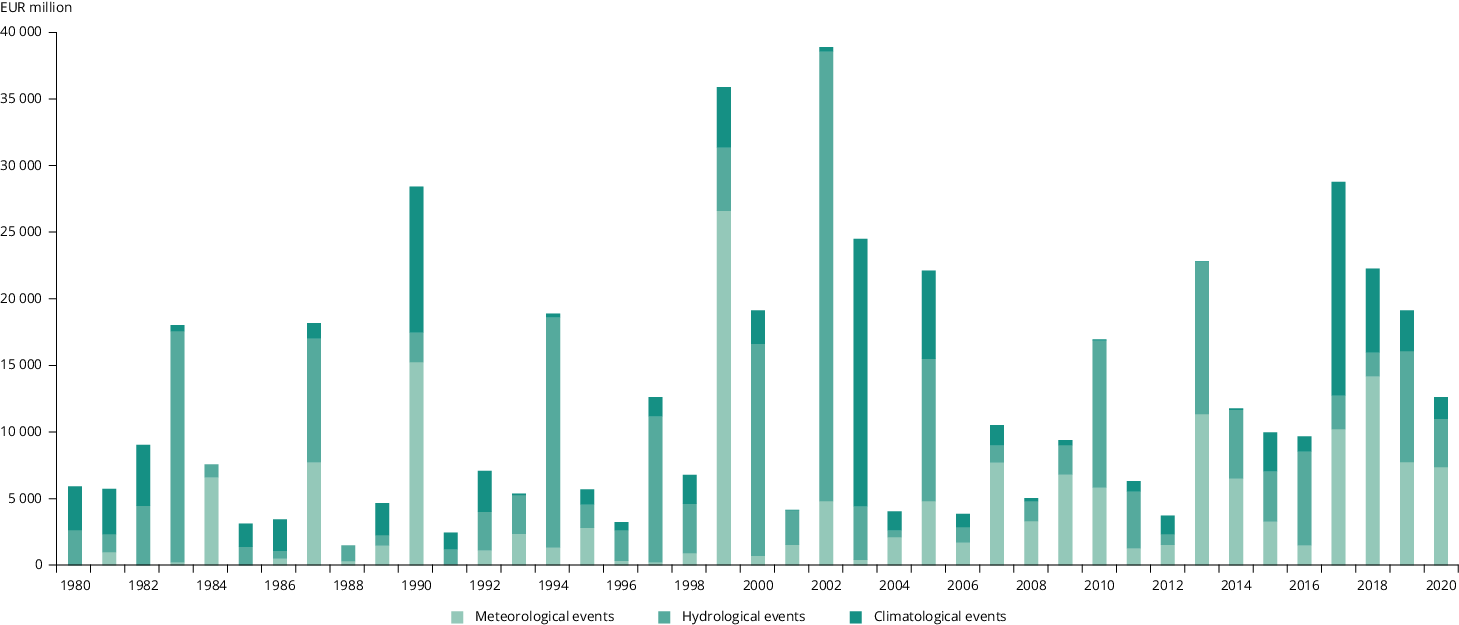
More info...
More info...
Figures 5a and 5b show the total economic losses per person (capita) and square kilometre (area). The CATDAT data indicate that the highest losses per capita were in Switzerland, Slovenia and France, and that the highest losses per area were in Switzerland, Germany and Italy. The NatCatSERVICE data indicate that the highest losses per capita were in Switzerland, Luxembourg and Denmark, and that the highest losses per area were in Switzerland, Malta and Luxembourg. According to the CATDAT data, the lowest values per capita were in Liechtenstein, Turkey and Iceland, and per area were in Iceland, Norway and Liechtenstein. The NatCatSERVICE data indicate that the lowest values per capita and per area were in Estonia, Iceland and Turkey.
More info...
More info...
Given the high degree of interannual variability in natural hazards, the Sendai Framework for Disaster Risk Reduction 2015-2030 recommends comparing progress towards targets with the decade before the framework was adapted. In line with that baseline assessment, Figure 6 shows the annual average losses due to natural hazards for the period 2005-2014 as shares of the annual average GDP for the same decade. Based on NatCatSERVICE data, Slovenia, Bulgaria and Romania have the highest shares (all over 0.35%), while Malta, the Netherlands and Luxembourg have the lowest (all under 0.03%).
More info...
Projections
Climate change is not the only driver of future economic losses and fatalities. An increase in adaptive capacity, through the development of adaptation measures, and an increase in vulnerability due to economic development and (in Europe to a lesser degree) demographic evolution will also affect future economic, social and environmental losses from weather- and climate-related events. In addition, the degree of interannual variability in extreme events is high. Modelling all of these effects with sufficient accuracy is not possible but, under similar economic conditions, the impacts of climate change can be estimated.
For Europe, for example, this is done by the Joint Research Centre of the European Commission in the PESETA IV project. PESETA IV looks at different hazards, such as heatwaves and cold waves (their human impact), windstorms, water resources, droughts, river and coastal floods, and wildfires. It also looks at different sectors and systems such as forests, agriculture and energy. According to the PESETA IV final report, climate measures in line with a 1.5°C instead of a 3°C temperature increase scenario could prevent up to 60,000 annual fatalities due to heatwaves and prevent drought losses of EUR 20 billion per year by the end of this century. Damage from river floods could be halved, to around EUR 24 billion per year, and economic losses from coastal flooding could be reduced by more than EUR 100 billion per year by 2100.
The G20 Risk Atlas provides other estimates of the economic impacts for different sectors under different climate change scenarios for the European Union and G20 countries in Europe such as France, Germany, Italy and Turkey. For example, annual damages from river flooding alone are expected to amount to roughly EUR 21 billion by mid-century and EUR 30-40 billion by the end of century under a relatively moderate temperature increase scenario. Under a high emissions increase scenario, losses from river flooding could reach over EUR 70 billion by the end of the century.
Policy context
As described in the EU adaptation strategy ‘Forging a climate-resilient Europe’ and the staff working document ‘Closing the climate protection gap — Scoping policy and data gaps’, as no standardised public data sets of economic losses based on public records from countries are available for Europe, the European Commission encourages public-private partnerships to collect and share these data in the future. At some point, these public data will also be used for the EEA’s indicator on economic losses and fatalities from weather- and climate-related events. Data on losses and fatalities due to extreme events also inform the EU civil protection mechanism and Europe’s disaster risk management, for example in the European Commission’s ‘Overview of natural and man-made disaster risks the European Union may face’.
At the international level, the Sendai Framework on Disaster Risk Reduction has 38 indicators to measure progress towards seven targets. Moreover, the United Nations Sustainable Development Goals (SDGs) have an international indicator set with 232 unique indicators to track progress towards the 169 targets of the 17 SDGs.
The Paris Agreement reaffirmed the Warsaw International Mechanism for Loss and Damage as the main vehicle under the United Nations Framework Convention on Climate Change (UNFCCC) for averting, minimising and addressing loss and damage associated with climate change impacts, including extreme weather events and slow onset events.
The Glasgow Climate Pact agreed on at the UNFCCC’s 26th Conference of the Parties (COP26) acknowledges that climate change has already caused and will increasingly cause loss and damage. It also acknowledges the importance of coherent action in responding to the scale of needs arising from the adverse impacts of climate change.
Further information
Together with this briefing, the EEA also publishes the core set indicator ‘Economic losses and fatalities from climate-related extremes in Europe’ (based on the CATDAT data only). More detailed information about the CATDAT and NatCatSERVICE databases can be found in the European Topic Centre on Climate Change Adaptation (ETC/CA) Technical Report ‘Economic losses and fatalities from weather- and climate-related events in Europe.’
For several years, the EEA indicator has been part of the 100 indicators managed by Eurostat and used to measure the EU’s progress towards the Sustainable Development Goals. EIOPA, the European Insurance and Occupational Pensions Authority, is responsible for developing and managing the natural catastrophe dashboard. The EEA provides data that support the further development and updating of this dashboard. In addition, the EEA and EIOPA are working together to develop the knowledge base on physical risks and the protection gap in Europe.
Ongoing collaborative work includes developing the assessment underpinning the EEA’s core set indicator to measure progress under the EU’s Eighth Environment Action Programme, the Joint Research Centre’s Green Resilience Dashboard Indicators and fiscal sustainability reporting by the Directorate-General for Economic and Financial Affairs.
Using information from two databases, both of which use multiple input sources and strive to be as transparent in their definitions and as internally coherent (i.e. applying the same criteria over time and for different countries) as possible, gives a wide range of values for economic losses and insured economic losses. The variation in fatalities is mainly due to variations in heatwave mortality, as the numbers from the databases are similar for all other types of events. Activities to collect information on total and insured economic losses and fatalities are ongoing in several European countries, e.g. Germany (Box 2). However, even more detailed and transparent definitions and metadata will be needed if national data from the 32 EEA member countries are to be used for a comprehensive European overview.
Box 2. Case study: collecting data on economic losses and fatalities from natural hazards in Germany
The German Federal Environment Agency is currently conducting a research and development project entitled ‘Adaptation Frameworks’. An essential work package of the project is the technical development of a ‘climate damage register’, a methodology for recording climate change-related damage and costs systematically and within a reasonable period of time after the event. In this way, both insured and non-insured damages, including monetary and extended damages (e.g. ecosystem services), should be taken into account. Of particular relevance is the differentiation of ‘climate change’ from other influencing factors.
The project started at the end of 2020. Currently, possible data sources are being researched and a technical proposal is being developed. The Federal Environment Agency plans to reflect on this with relevant stakeholder groups and potential data suppliers, in particular relevant authorities, the science community and the insurance industry. Furthermore, the methodology will be applied prototypically to recent loss events within the framework of the project.
The project will run until the end of 2023 and will present a final report, which will include the methodology for and structure of the register. The report will be published by the Federal Environment Agency.
Identifiers
Briefing no. 21/2021
Title: Economic losses and fatalities from weather- and climate-related events in Europe
HTML - TH-AM-21-018-EN-Q - ISBN: 978-92-9480-419-8 - ISSN: 2467-3196 - doi: 10.2800/7654
PDF - TH-AM-21-018-EN-N - ISBN: 978-92-9480-418-1 - ISSN: 2467-3196 - doi: 10.2800/530599
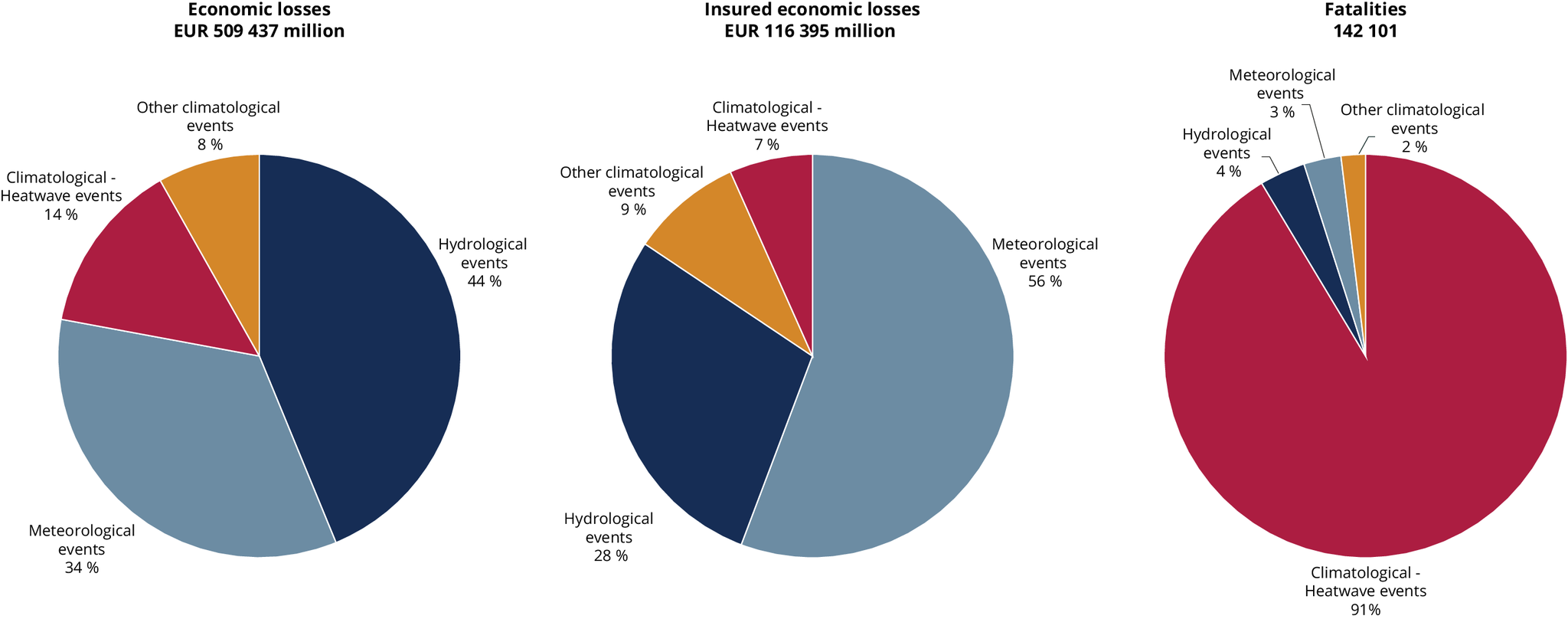
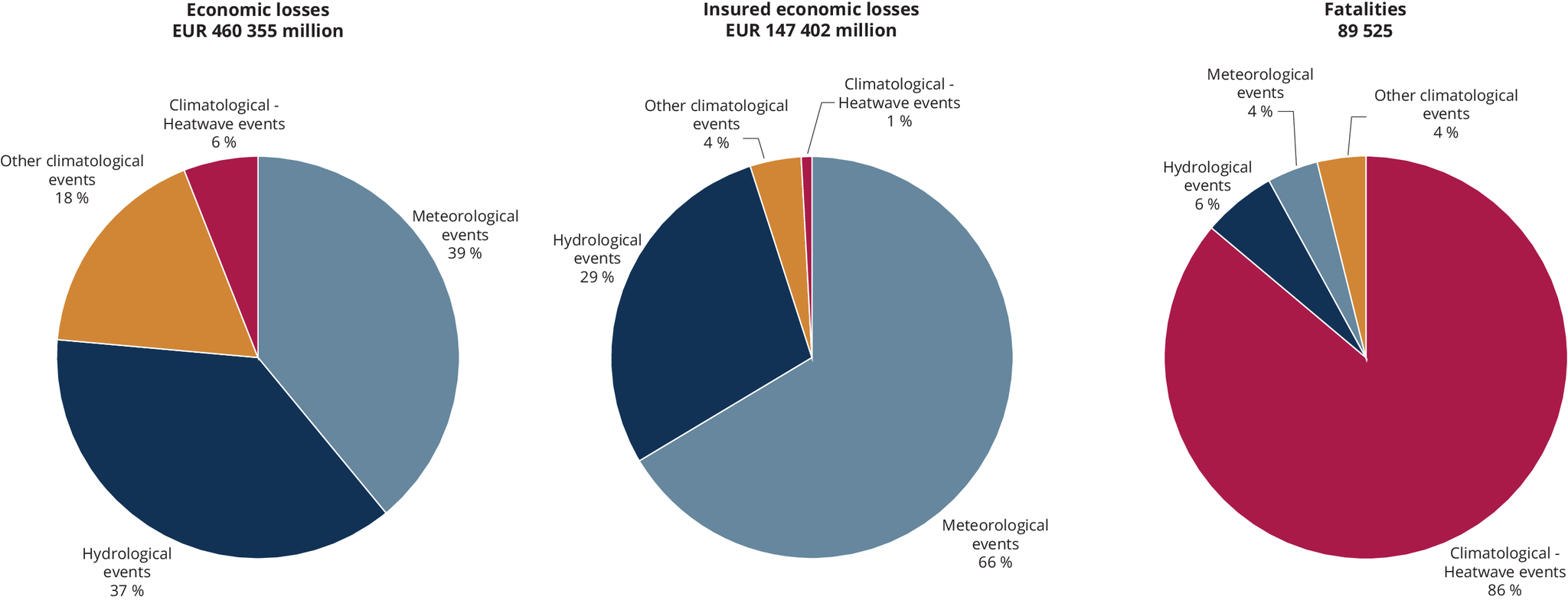
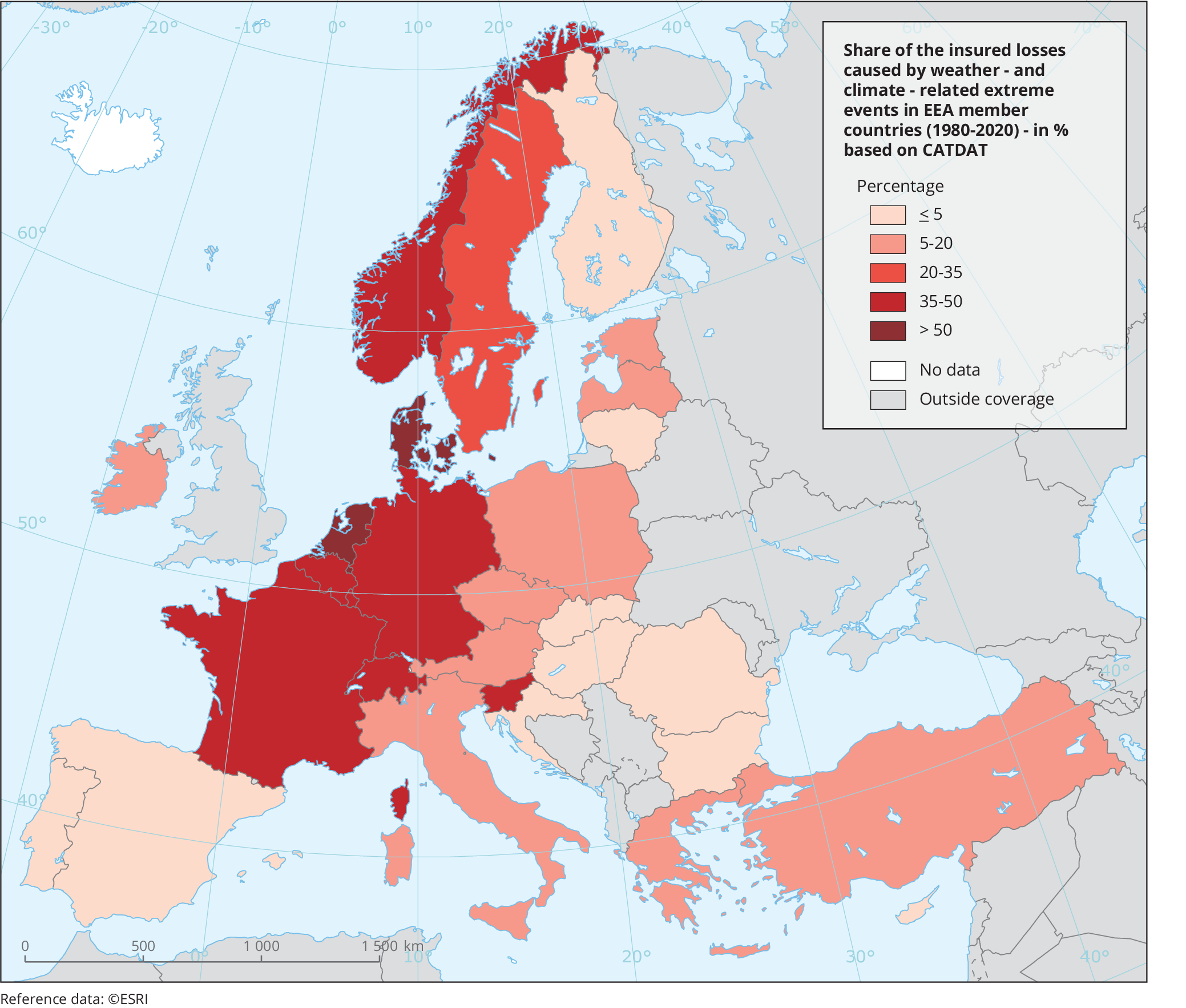

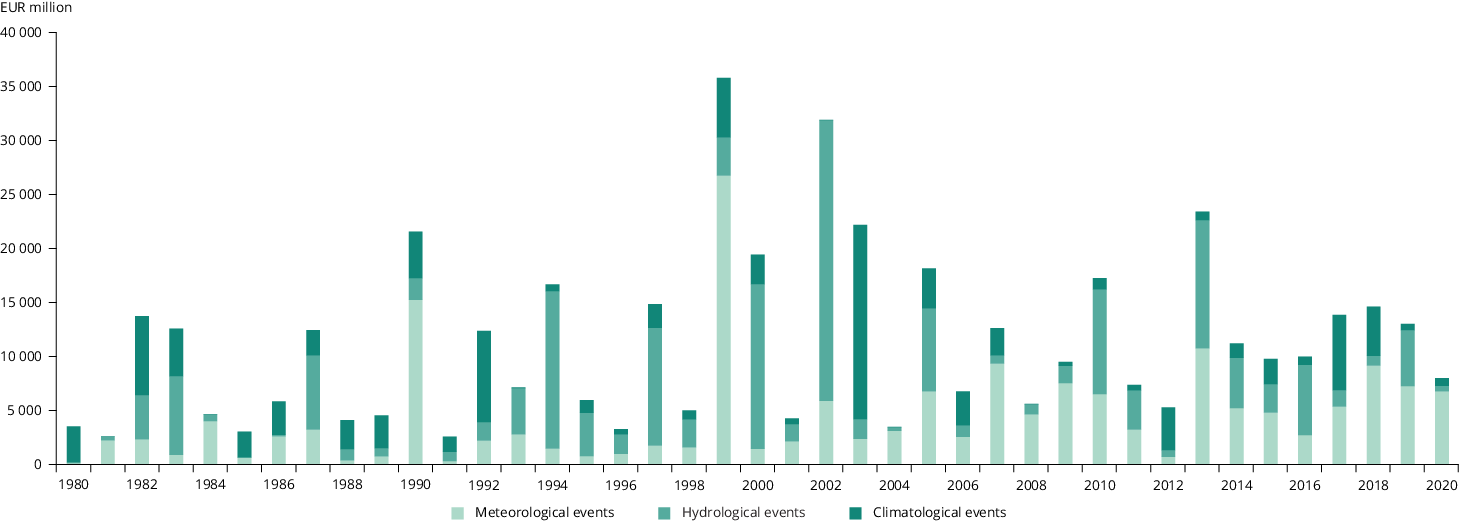
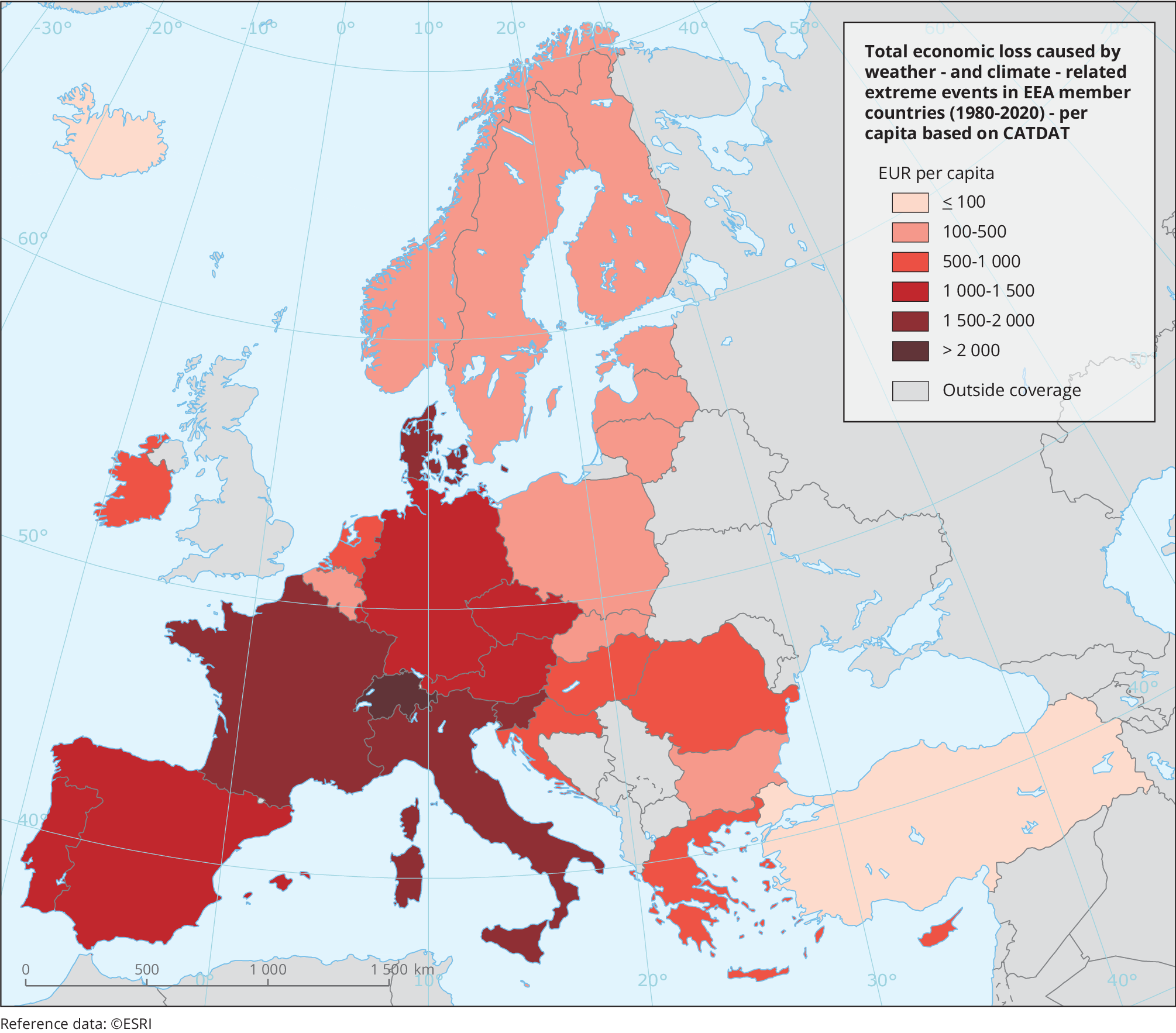
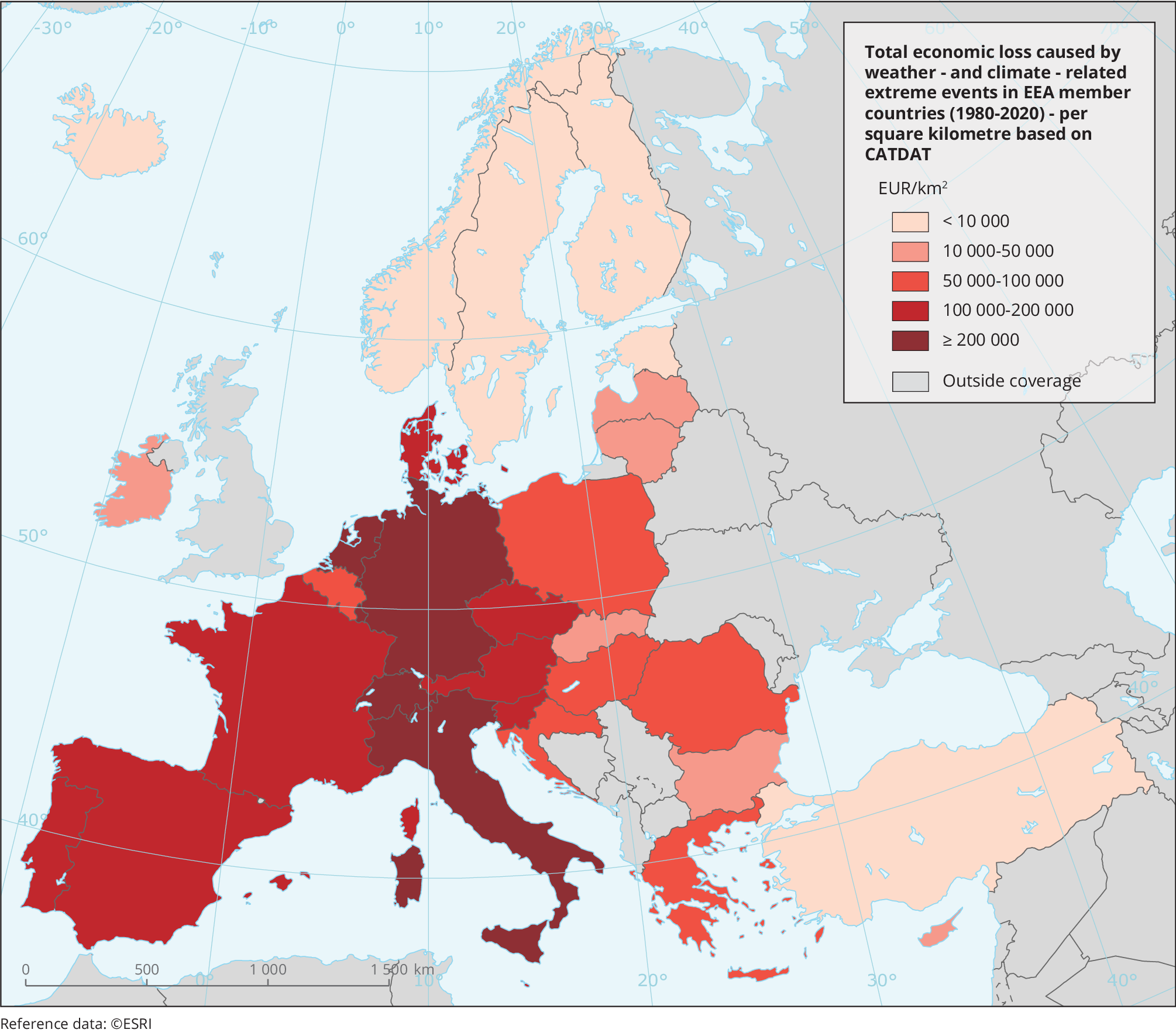
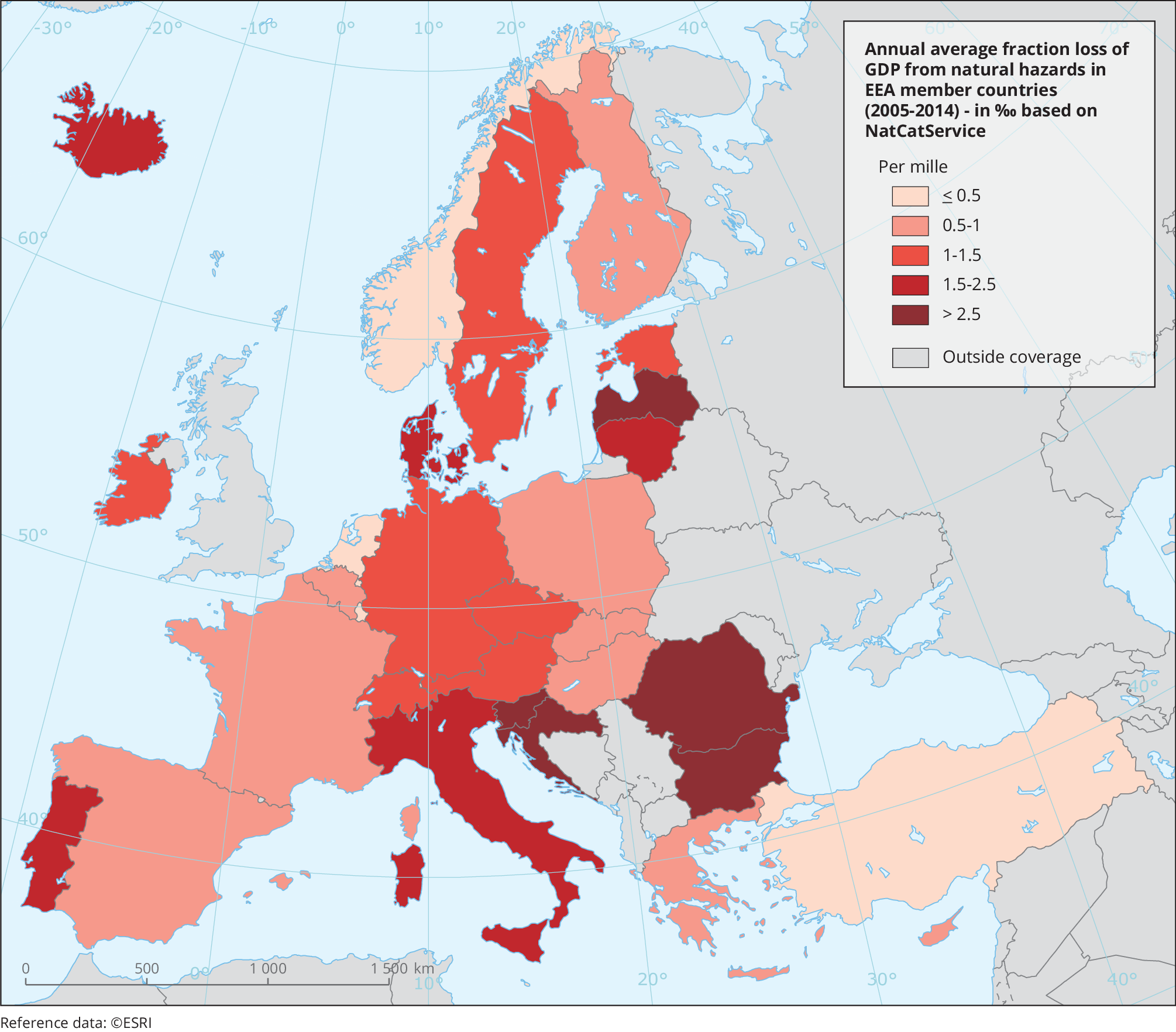
Document Actions
Share with others